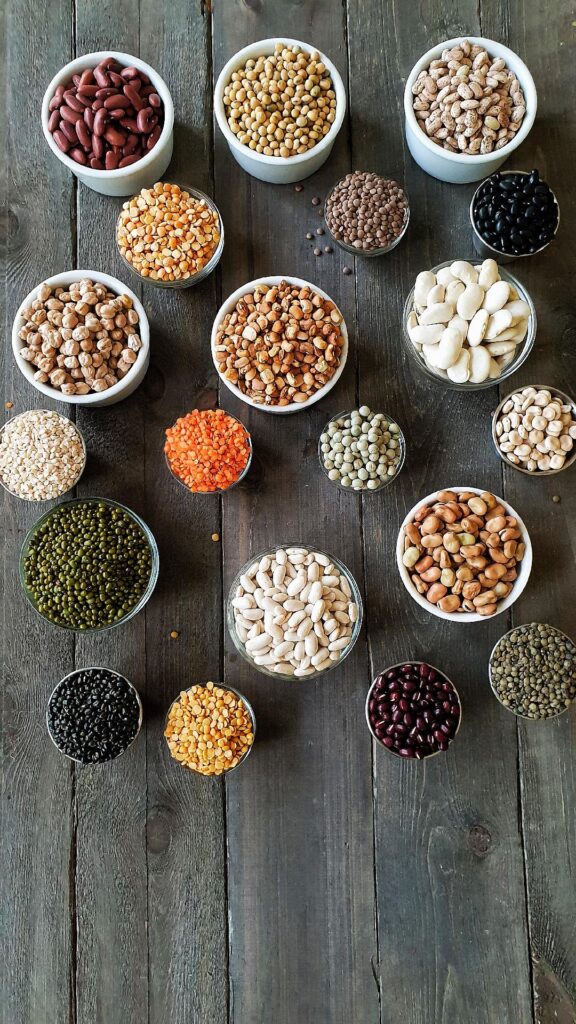Hey guys! It is World Vegan Day today and what better time to talk about legumes!
I have been itching to write this article for the longest time! I did my diploma in Nutrition and Lifestyle Coaching in the last year. Last February I gathered 25 different legumes and paired with whole grains, fruits, vegetables, nut and seeds, I pulled off a strict vegan month. I learnt a lot which has influenced my flexitarian lifestyle of which cooking and eating my legumes are a big part of. I hope I inspire you to eat more of these goodies. Let’s talk about how to buy, store, process, cook and hopefully minimize flatulence and heartburn if this was a problem.
What are they?
Pulses, beans and peas! Are they all the same?
Short answer, they are all legumes. Legumes are the dried seeds of pod-bearing plants. Pulses often refer to legume crops harvested solely for the dry seed such as beans, lentil and peas. Other categories of legumes exist such as; nut-like/oily legumes (soybeans, peanuts), forage legumes (alfalfa) and fruit legumes (tamarind, carob).
Why should I eat them?
As a kid, I was often encouraged to eat my beans because it would help me grow tall. This is because legumes are high in plant-based proteins. Meat consumption was quite moderate back in the day and emphasis was laid on plant-based proteins.
As an adult, I have come to know that most legumes actually contain more carbohydrates than protein which is not a bad thing because they are high in dietary fibre which could be beneficial for digestive and immune health as well as promoting satiety which could assist in weight loss and management.
With the exception of soybeans, legumes are not sources of complete protein. Legumes typically miss the two essential amino acids cysteine and methionine and many cultures around the world have complemented legumes with grains which contain these but miss lysine found in legumes. That explains why we eat rice with beans, beans with corn, wheat with peas/lentils etc.
In addition to proteins and dietary fibre, legumes contain minerals and vitamins such as magnesium, phosphorus and folates.
In summary they are good for you!
Look at the table below, any surprises? Choose your legumes according to your goals, they have varying compositions of macro-nutrients.

Nutrition data: Nutritics software.
Digestion and absorption
Legumes contain short chain carbohydrates that may be poorly absorbed in the small intestine and they do cause some discomfort for sensitive individuals.
Legumes also contain ‘’antinutrients’’ such as lectin (especially in kidney beans) and phytic acids which could impair absorption of iron, zinc and calcium causing micronutrient insufficiencies.
There are a few ways to improve the digestibility of legumes;
- Soaking: with the exception of few legumes such as split lentils, all dried legumes should be soaked for at least 6 hours before cooking and thoroughly rinsed with soaking water discarded. Soaking reduces the antinutrients, encourages production of beneficial enzymes and improves digestibility.
- Sprouting: involves soaking legumes for several hours and refreshing the soaking water till sprouts emerge. As sprouts grow, proteins, enzymes, vitamins and other nutrients increase. Most commonly sprouted legumes are mung beans and alfalfa.
- Cooking: makes legumes safe to eat and more digestible.
- Spices: such as asafoetida (India), ajwain (India) and epazote (Mexico) are used in dishes to aid the digestion of legumes by reducing flatulence.
- Fermentation: this involves yeast and/or bacteria converting the simple sugars in carbohydrates containing foods to alcohol, gases and/or acids. Fermented foods have a probiotic effect, may improve digestion, enhance nutrients and reduce antinutrients. The most commonly fermented legume is soy beans in the form of tempeh and miso.
How to buy and store them.
When you buy legumes, they should look bright and shiny. They should be free from dust, mould and little holes. Little holes indicate that it has weevils, when you buy infested legumes, the weevils will keep growing, multiplying and eating up your legumes. Legumes should be stored in cool dry containers and can be stored in the freezer. If you buy in bulk and do not have freezer space, adding dried chilli into the storage container could keep weevils from infesting the legumes.
The longer dried legumes are stored, the tougher and longer to cook they become, a general recommendation is to use within 6 months of purchase.
Most legumes do have a long cooking them and this can inconvenient! Here are a few recommendations:
- When you do have time to soak and cook beans, cook a big batch and freeze the extras on a sheet pan, then transfer to a Ziploc. The sheet pan ensures the legumes freeze separately and you don’t end up with one big block of beans that you have to defrost to get a portion.
- If you cannot cook your own beans, canned ones are just fine, rinse thoroughly before use.
- Cooked beans keep well in the fridge for a few days and you can sneak them into soups, stews, salads and in grain dishes.
Here are a few recipes with legumes for you!
Chickpea Curry, Chickpea pancakes, Soy milk, Black bean chili.
Hope you enjoy them! We will talk about whole grains soon!
Keep calm and eat legumes!






